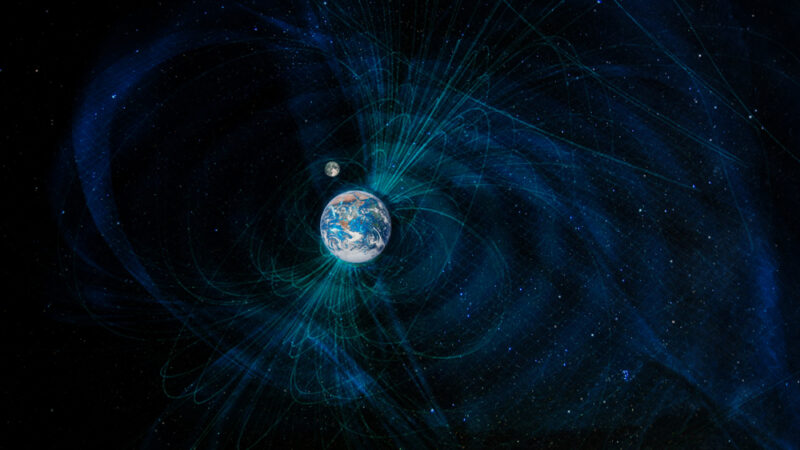About 41,000 years ago, the Earth’s magnetic field suddenly flipped. Positive became negative, and negative became positive. Using data from the European Space Agency, geoscientists have now created a soundscape of the cataclysmic event. The eerie, alien-like track resembles creaking wood and falling rocks in an echo chamber.
The Earth’s core generates the magnetic field around our planet, forming a protective cocoon around us. It allows life to thrive on Earth in a way that is not possible on neighboring planets.
During what was called the Laschamp event, this magnetic shield weakened to just five percent of its current strength. As a result, ionizing radiation from the sun bombarded the Earth, and planetary chaos ensued. It triggered mass extinctions, electrical storms, solar winds, climate change, and even changes in ancient human behavior.
Geological evidence of the event first turned up in the French Massif Central, leaving signatures in the Laschamp lava flows. Elsewhere, levels of the beryllium-10 isotope skyrocketed. Preserved kauri trees in New Zealand show spikes of atmospheric radiocarbon.
Researchers believe that it took 250 years for the magnetic field to flip. It stayed that way for 400 years before reverting back to its current position. Four centuries seems long to us, but “in terms of geological time, that is very fast,” explained Norbert Nowaczyk of the German Research Center for Geosciences.
The Earth’s magnetic field has flipped several times over the millennia. Researchers are not sure why it happens. There seems to be no pattern to how often this occurs.
The magnetic field itself is in near-constant motion. Since it was first precisely located by polar explorer Sir James Clark Ross in 1831, the Magnetic North Pole’s position has gradually drifted north-northwest by more than 1,000km, and its forward speed has increased from about 16km per year to about 55km per year, says NASA.
Projects such as the European Space Agency’s Swarm mission use satellites to measure magnetic signals around the Earth. This would warn us of any imminent magnetic field flip. Researchers do not think this will happen again for thousands of years. Still, they are keeping an eye on an area known as the “South Atlantic Anomaly,” a region where the magnetic field is weaker than anywhere else on Earth.






